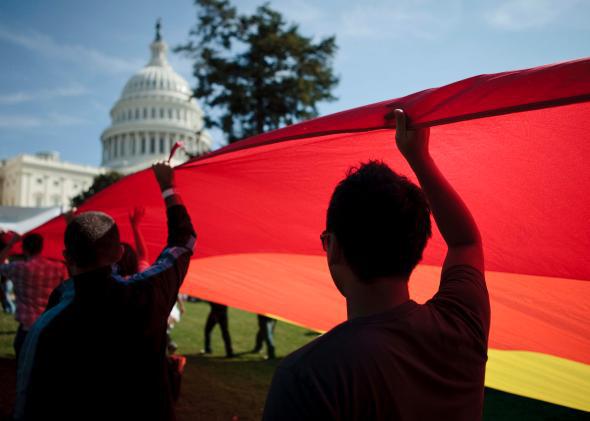Earlier this month, the LGBTQ community and its allies exploded in controversy after Grantland author Caleb Hannan outed a trans con artist who then committed suicide. Hannan’s story revealed that both he and Grantland’s staff are startlingly oblivious to the struggles of trans people. But it also inadvertently brought a broader issue into the spotlight: Trans people in America are killing themselves at staggering rates—and we’re doing almost nothing to prevent it.
If any other population attempted suicide as frequently as trans people, the government would declare a public health crisis. According to a new study by the Williams Institute and the American Foundation for Suicide Prevention, 46 percent of trans men and 42 percent of trans women in the United States have attempted suicide. That’s far higher than the 4.6 percent national average, and more than double the 10–20 percent of gay and lesbian people who report a suicide attempt. And the numbers only get bleaker from there, revealing that trans people also experience homelessness, domestic violence, mental illness, sexual abuse, and employment discrimination at vastly higher levels than the general population.
How can this be happening in a country with majority support for marriage equality? It’s tempting to say that gay rights groups have left behind the “T” in LGBTQ, and it’s true that organizations like the HRC have privileged gay rights over trans issues. But the problem goes much deeper than that. In truth, gay rights and trans rights are fundamentally different fights. The gay rights movement can easily downplay the physical components of homosexuality and emphasize abstractly chaste values like love and marriage. Most Americans (though not all Supreme Court justices) have abandoned their squeamish fixation on gay sex, realizing how weird and intrusive it is to obsess about other people’s most intimate moments.
But it’s not so easy, it seems, for Americans to let go of their preoccupation—or really, thinly veiled disgust—with the physical components of trans life. For far too many straight people, trans identity equals strange genitals and gross surgery. Trans people have yet to attain equality in the United States because they don’t even have true personhood. While gay people have succeeded in a nationwide PR campaign to be seen as utterly average, trans people are still struggling to establish themselves as actual humans in the eyes of many Americans. Until that happens, the trans suicide rate will only climb, and discrimination against trans people will continue to run rampant.
To grasp just how the trans movement has fallen behind the gay rights movement, take a look at conservative responses to ENDA. All but the most vile extremists have stepped away from the classic canards—pedophilia, perversion, and so on—that fuel homophobia, and so anti-ENDA activists, like anti-marriage proponents, must rely on euphemistic sophistry like protecting “traditional values.” But when it comes to trans people, this cautious bigotry abruptly transforms into repulsive rants against the perceived grotesqueries of trans life. Suddenly, we’re back to the bad old days of LGBTQ vilification: Conservatives execrate trans people as degenerate freaks, barging into the wrong bathrooms and exposing their “pre-op junk” to little girls in locker rooms. They revive the tired old “protect the children” battle cry, shamelessly painting trans people as molesters, harassers, and exhibitionists. And, if all else fails, they fall back on the old bathroom horrible, playing to Americans’ basest fears (and fascinations) about trans life.
Why is this cruel calumny still acceptable from mainstream media outlets when similar charges against gay people have long since been relegated to the darker corners of the Internet? Because trans-bashing, unlike gay-bashing, remains effective when it’s played to a population still largely ignorant of trans issues. Grantland’s editors aren’t alone in their total ignorance of trans issues; the rest of the country is similarly uninformed about the suicide attempts, the discrimination, the hate crimes. And as long as Americans remain uneducated about trans struggles—as long as they see trans people as a set of mysterious genitals rather than actual humans—they’ll remain susceptible to such poisonous obloquy. Trans people don’t commit suicide because they’re trans; they commit suicide because the rest of us don’t treat them like people. Changing that won’t solve the whole problem. But it’s an excellent place to start.
